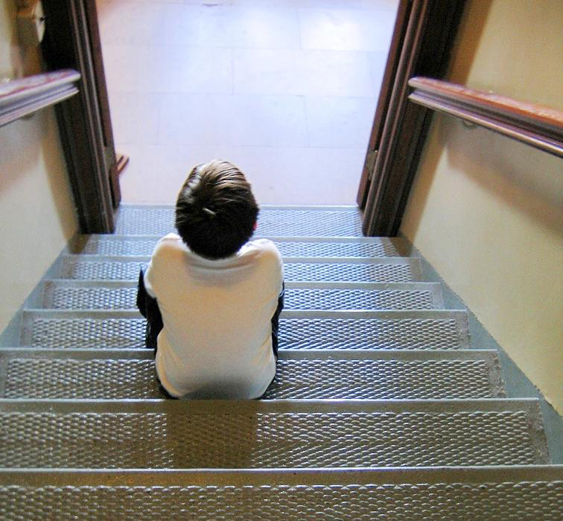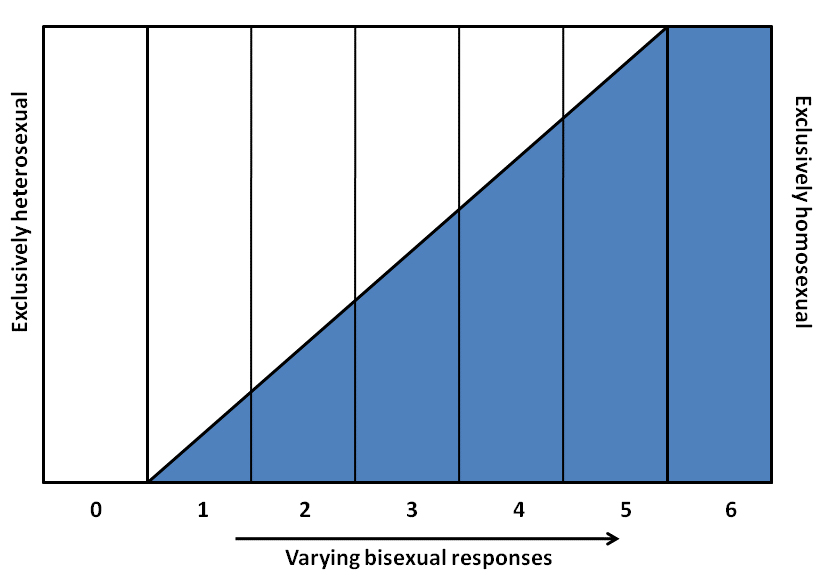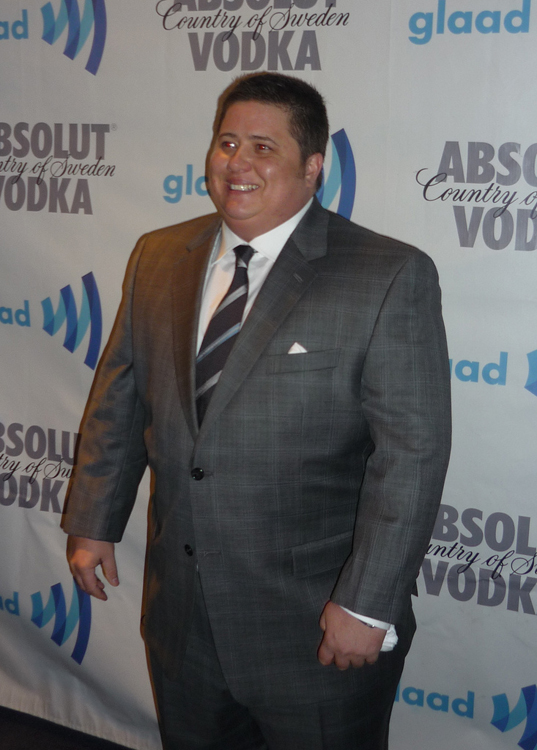
Currently Reading
Rate this book
1 of 5 stars2 of 5 stars3 of 5 stars4 of 5 stars5 of 5 stars
Preview
The Wisdom of Sundays: Life-Changing Insights from Super Soul Conversations
by
Oprah Winfrey
4.33 · Rating details · 2,699 Ratings · 329 Reviews
---
Oprah Winfrey says Super Soul Sunday is the television show she was born to do. "I see it as an offering," she explains. "If you want to be more fully present and live your life with a wide-open heart, this is the place to come to."
Now, for the first time, the aha moments of inspiration and soul-expanding insight that have enlightened millions on the three-time Emmy Award-winning Super Soul Sunday are collected in The Wisdom of Sundays, a beautiful, cherishable, deeply-affecting book.
Organized into ten chapters--each one representing a powerful step in Oprah's own spiritual journey and introduced with an intimate, personal essay by Oprah herself--the Wisdom of Sundays features selections from the most meaningful conversations between Oprah and some of today's most-admired thought-leaders.
Visionaries like
Tony Robbins,
Arianna Huffington, and
Shonda Rhimes
share their lessons in finding purpose through mindfulness and intention.
World renowned authors and teachers like
Eckhart Tolle,
Thich Nhat Hahn,
Marianne Williamson and
Wayne Dyer,
explain our complex relationship with the ego and the healing powers of love and connection;
and award-winning and bestselling writers like
Cheryl Strayed,
Elizabeth Gilbert, and
Elizabeth Lesser
explore the beauty of forgiveness and spirituality.
Paired with beautiful photographs, including many from Oprah's private property in California where each episode of Super Soul Sunday is filmed, The Wisdom of Sundays promises to be a timeless keepsake that will help readers awaken to life's wondrous possibilities and discover a deeper connection to the natural world around them. (less)
GET A COPY
Kobo
Online Stores ▾
Book Links ▾
Hardcover, 240 pages
Published October 17th 2017 by Flatiron Books
ISBN
125013806X (ISBN13: 9781250138064)
Edition Language
English
----------
Review of ISBN 9781250138064
Rating
1 of 5 stars2 of 5 stars3 of 5 stars4 of 5 stars5 of 5 stars
Shelves currently-reading
edit
Format Hardcover edit
Status
COMMUNITY REVIEWS
(showing 1-30)
Rating details

Sort: Default
|
Filter

Jun 28, 2018Cheri rated it it was amazing · review of another edition
Shelves: 2018, audio, spirituality, human-connection
Essentially this book is a series of conversations, on wisdom that Oprah has had with some of those leaders in “great thought.” Some of these were guests of her Super Soul Sunday show, guests whom she knew had been on their own spiritual journey and, as she says, their “wise words have led me to knowing for sure that we are all spiritual beings having a human experience.”
I listened to the audio, and it was very different from what I had expected once this began. I loved getting a different view on how each of these viewed spirituality, the little, seemingly easy questions she asked of these guests, such as their definition of what spirit means, or what a soul is.
”Your spirit is the part of you that is seeking meaning and purpose. That’s one way someone can relate to that. Another way to understand spirit is that it’s the part of you that is drawn to hope, that will not give in to despair. The part of you that has to believe in goodness, that has to believe in something more.” - Caroline Myss
”Millions of us are acquiring that sense that life has a meaning, that I have a purpose, that I am more than this mind and body. I’m more than molecules and dendrites and neurons and enzymes.
I have a part of me that is immortal.” - Gary Zukav
”We have this immense interior life inside of us. We can call it the life of the wind. Poets and mystics and people have been trying to figure out what to call this for a long time. But there is an inner silence in it. And there is an incredible mystery floating in it. This is where the divine lives in us.” - Sue Monk Kidd
”The opposite of love is not hate, but indifference.” - Elie Wiesel
And while the underlying theme wanders in and out of a discussion of spiritual discussions, they are not what most people would consider “church-y.” The roots of becoming more “in tune” with your own feelings, needs, desires, and how to achieve that, to give some food for thought so you can be motivated to at least attempt to try to achieve that. The focus isn’t particularly a religious one, it’s more about ways of living you may want to emulate, may want some motivating reminders that you really would like to appear more present, appear more like you are actually listening. That the other person knows they’ve been heard.
Deepak Chopra, Michael Bernard Beckwith, Jack Kornfield, Ram Dass, Elizabeth Lesser, Rob Bell, Llewellyn Vaughan-Lee, Thomas Moore, Elizabeth Gilbert, Pastor John Gray, Michael Singer, Gary Zukav, Pastor Joe Osteen, Tony Robbins, David Brooks, Brené Brown, Sue Monk Kidd, Devon Franklin, Amy Purdy, Diane Nyad – and those are just within the first 20% or so of the book. Some of these conversations, thoughts on the topic are longer, some are “only” a paragraph, but all are thought provoking.
“Think higher and feel deeper.” – Elie Wiesel
I loved listening to this, loved hearing the words from the various voices who had been interviewed by her over time, loved the offering of this book. It certainly helped make an otherwise long ride much more enjoyable and thought provoking! (less)
flag32 likes · Like · 33 comments · see review

Oct 20, 2017Gisela Hausmann rated it it was amazing
Shelves: inspirational, motivational-inspirational
Oprah Winfrey's latest book is a book to be read and re-read often. The book is sectioned into 10 chapter groups - Awakening, Intention, Mindfulness, Spiritual GPS, Ego, Forgiveness, Broken Open, Grace and Gratitude, Love and Connection. The order is quite telling; notice that "Ego" is right in the middle, followed by forgiveness. If we envision these topics as a bell curve, it's an uphill battle to learn to deal with the Ego, after learning it, things get gradually easier.
At the end of her book, Oprah writes, "In order to experience life, you’ve got to start asking life’s big questions;" her book is an attempt to help. What I really like about this book is that it features an array of answers to each question, complimentary pictures that express each topic visually, the reader can zoom in on the topic from various angles.
Here are very few that impressed me the most:
Eckhart Tolle: "... The real truths of life are never entirely new to you because there is a level deep down within you where you already know all the things, all those spiritual truths that you read or hear and then recognize them. Ultimately, it’s not new information..."
Michael Bernard Beckwith: "... Everyone is spiritual whether they know it or not..."
Jack Kornfield reminds us to ask ourselves, "... “What’s my best intention?” Because if you listen to your heart and ask, “What’s my best intention?” it will answer..."
Much beloved Ram Dass tells us how he found out that a Maharaji he met could read his mind, "... And he was loving me, all of me, all the stuff of me that I never wanted anybody to know..."
To my surprise, David Brooks was also one of Oprah's guests. Then again, not surprisingly Brooks offers from his immense knowledge quoting the great theologian Augustine, (Question and answer), "What is sin?" “We sin when we have our loves out of order.”
It's a brilliant definition. If an elderly female relative asked us whether an "old-fashioned" hat or brooch given by her late husband still looks good, most of would come up with a little white lie because we would not want to hurt her feelings. "Our loves would be in order.” The white lie would not be sin.
Considering that Augustine died more than 1,500 years it is astonishing that he was able to define it so clearly. Because the world is getting overpopulated, today even little sins which are real sins by Augustine's definition, have a huge impact. Just think of the environment. Dumping trash, not standing up and speaking the truth... the list is endless.
I knew Arianna Huffington's story, how she overworked herself when creating the Huffington Post, and it was good to find it again in this book. If the price for success is too high it's not the success we are looking for, plus our journey will be interrupted.
Anne Lamott articulates what so many of us think at times (certainly I do), "... and you can say anything. I say to God sometimes, “You have got to be kidding.” Or I say, “Would it be so much skin off Your nose to cut this person a little slack?..."
Deeply, deeply moving is Timothy Shriver's statement, "... Normal. The tyranny of that word, it’s just, like, it’s a cancer in the culture. Are you normal? Are you fitting in? Are you like everyone else? My God, it’s terrifying. And yet we all feel that..." which led him to his work for the Special Olympics.
Oprah's elaborations of the dangers of "Egos" hit at the core of many problems (again, I was reminded of what I see on social media platforms)
"... ask, “What role does the ego play in this situation?” This is the essential question we should all be asking ourselves whenever we encounter difficulty..."
and, "... The ego has the power to influence or derail every aspect of our lives. Accepting this as truth opens the door to where the real work begins..."
Which leads me to describing one of the most powerful pictures, placed in the chapter group "Ego." (p. 101)
Most of us have seen in real life what the picture shows: a beach, with gentle waves rolling ashore. A couple of rocks of different sizes lie on the beach. The waves have washed out the sand around the rocks. I see two interpretations:
1) The waves are washing away the foundation around the Egos. By law of physics the rocks themselves enable the process because they "stand in the way."
2) At the same time this process will also break down the "Egos."
Hence: Does it make sense to deny that all of us are part of the universe? Or, try to insist on the power of our Ego?
The picture reminds us that the depicted egos won't last.
And, it is in this way that Oprah's book creates a puzzle readers can put together themselves. If we are not in the mood to hear from one of the featured guests we can skip their contribution until we are ready.
Last but certainly not least, I want to mention Sister Joan Chittister's contribution, "... I was about twelve and we came home and my little parakeet was gone. ... my heart was breaking. And I got into bed and I put my face down in the pillow and I sobbed...
... I realized it was my mother. And then I felt somebody on the floor on the other side, and I realized it was my father, and they had their arms around me...
And, as I look back over the years, that’s when I learned that humanity is about identifying with somebody else’s pain, with being there..."
*
This is a beautiful book about the BIGGEST QUESTIONS and it is user-friendly! Love the way how it is designed, planned, structured.
Even though it's "only" a book it is a kind of interactive book. In a too noisy world, retreating with this book (a real book, not an app) and pondering the many offerings may lead us to discovering our own soul. Ideally, we should do a lot of pondering outside, in synch with nature.
5 stars,
Gisela Hausmann, author & blogger (less)
flag14 likes · Like · comment · see review

Oct 18, 2017Jovan Bone rated it it was amazing
I just got this book yesterday so I am just a few pages in and I got to say, it is AMAZING! The book itself is BEAUTIFUL. Like the old school books with the fabric type of cover. It is perfect for coffee tables. The pages inside are BEAUTIFUL as well - beautiful pictures on most pages and there are quotes and then there are stories. If you like Super Soul Sunday, you will definitely love this book. If you love quotes, you will love this book. If you are spiritual, you will love this book. If you love a beautiful book, you will love this book. I absolutely cannot wait to keep reading it. And this book will be one that stays in my house forever and probably be a decoration on my coffee table or end table. Oprah did good. :) (less)
flag14 likes · Like · 1 comment · see review

Nov 19, 2017Deb (Readerbuzz) Nance rated it really liked it · review of another edition
Shelves: problems-ideas, philosophy, happiness
Want wisdom? Go to the wise. That's what Oprah does. She's a master at asking questions and listening deeply. When you talk to the wise, that's all you have to do...ask questions and sit back and listen. I couldn't wait to get into the car each day for my ten-minute drive to work so I could listen to these amazing conversations.
I want more Super Soul conversations.
flag11 likes · Like · comment · see review

Dec 02, 2017Michael rated it really liked it · review of another edition
I will admit that I skimmed the majority of this book, mainly cause of how repetitive it became. However I did like the interviews with famous actors on inspiring beliefs about life, love, spirituality and things of this nature. I REALLY loved the last chapter when Oprah asked celebrities to define what is the difference between Religion and Spirituality. While I enjoyed what everyone had to say Iyanla VanZant definition affirmed why I love her so much. "Religion is the rules, regulation ceremonies, and rituals developed by man to create conformity and uniformity in the approach to God. Spirituality is God's call to your soul." Yes!!!! I will also add that religion is one's man to please God but spirituality is knowing that God is already pleased with you because you are created in His image! I really loved that perspective, it really shined light on misconceptions regarding religion.
There were many highlights in this book but that stuck out the most! Also the question Oprah asks about what is the soul, Llewellyn vaughanlee put it plainly: "The soul is the divine part of our self. It is our divine nature. It is the part of us that is one with God. Everybody has a soul. It is immortal, eternal part of ourselves it belongs to God."
Not a huge fan of Oprah book recs, but I love how Oprah writes. It is very enthralling, also love the beautiful photos that accompanied it!
Great book, glad that I gave it a chance despite my initial fickle feelings towards it. (less)
flag8 likes · Like · see review

Apr 10, 2018Sylvia rated it it was amazing
Shelves: tbr-clean-up, spiritual, self-help, psychology, personal-development, mental-health, health-mind-body, health, books-that-changed-my-life-and-made, best-standalone
Beautiful and very inspirational. Just the book the soul needs especially when you are feeling lost and need some clarity to go forward. Will definitely be referencing this book anytime I need to take a breath and focus. Oprah never disappoints.
flag8 likes · Like · 2 comments · see review

Apr 15, 2018Janice Mcquaid rated it it was amazing
I was given this book by a very dear friend. Every Sunday I would sit with my coffee and read a page or to, savoring the words of wisdom. I would reread passages that resonated with me. Some applied, some did not, but they always made me think and reflect. I will pay it forward and pass along this book to others.
flag5 likes · Like · 1 comment · see review

Apr 24, 2018Faith Tydings rated it it was amazing
I listened to the audio version of this book earlier this year and then, more recently, I purchased the book so that I may have it to refer back to and they are both so completely different. I loved them both but, Wow!, they are so different from each other. The audio version has excerpts from Oprah's live interviews from her Soul Sunday show and the book has many, many pages of insights and quotes from wise, and famous people that Oprah admires and respects. I highly recommend both.
flag3 likes · Like · comment · see review

Feb 22, 2018Sara rated it it was amazing
Shelves: favorites, i-own-it
A beautiful book that explores topics including mindfulness, forgiveness, and fulfillment. Really enjoyed the wide variety of insights from all different types of authors, doctors, religious leaders, and world leaders. Fascinating stuff!
flag3 likes · Like · comment · see review

Mar 15, 2018Irene rated it it was amazing
A wonderful soul-searching book. Insights taken from her television series "Super Soul Sunday" Each one is a gem in itself. Very thought provoking.
Everyone should read.
=============
Amazon Book Review
All reviewersAll starsAll formatsText, image, video
5.0 out of 5 starsYou are the Ocean 🌊
ByOlga Dia, author of INDia 🌅on November 23, 2017
Format: Kindle EditionVerified Purchase
The body can be ‘rented out’ but not the soul. We are part of the Great Soul and we are all close to one another. We came from one place and if we look closely, we are not so very different, and in the end we shall all return whence we came.
So the greatest wisdom of this book is to convey to all of us that we're not so very different... The main problem is just to see the picture: we all form a huge circle, everyone is so familiar, and silent, and listening and above us is a great, mighty cloud, and we all know it is the common soul - Super Soul. That's the reason why we open our eyes wider, reading 'The Wisdom of Sundays'. We all know the way, but we need somebody who'll whisper: yes, it's true.
Oprah engaged the whole world in a brilliant conversation with thinkers and doers.
But the point is that all of them are talking about YOU, because you are a thinker and doer - you just need to know it!
One day in India a cheery, bald guru told me: "You can't even imagine how good you are!" And it's not about me, it's about all of us. We simply must know it!
For me, the words of wisdom from Super Soul Conversations are just the 'last drop' to become the ocean.
But we ALL need this drop.
Thank you, Oprah, for following your way - for your conscious decision to go with the flow, obeying even the slightest fluctuation in the water. Thank you for your deep questions, for hearing your heart and people around, and... thank you for this powerful inspiration!
You're the Ocean 🙏
10 people found this helpful
Helpful Comment Report abuse
5.0 out of 5 starsI am IN LOVE with this book!
ByR. Barberon December 2, 2017
Format: HardcoverVerified Purchase
It's like sitting with all the people who care and get it. While it's well-organized and I guess one could go through this book sequentially, I trust that wherever I turn in this book will be the perfect place, with the perfect lesson ready and waiting. So far, so good! I've never seen Super Soul Sunday, but if this book is a reflection of that program, I'm seeking that out, too. This book makes a perfect gift for the person emerging from a setback, beginning a new venture, contemplating love or forgiveness, and/or anything that is all about moving onward. The pictures are beautiful, the layout amazing. All in all, this book really touches my soul.
2 people found this helpful
Helpful Comment Report abuse
5.0 out of 5 starsUplifting and spiritual
ByAmazon Customeron October 27, 2017
Format: Kindle EditionVerified Purchase
If you love Super Soul Sunday like I do, then this is a book for you. It has excerpts from some of the greatest interviews that have been on. Super Soul Sunday is my church and spiritual session and if there is a time when I can’t watch it, I have this book to read again. I say again, because I couldn’t put it down and finished it the day I bought it. It would be a spiritual book to read again and again.
3 people found this helpful
---------------










